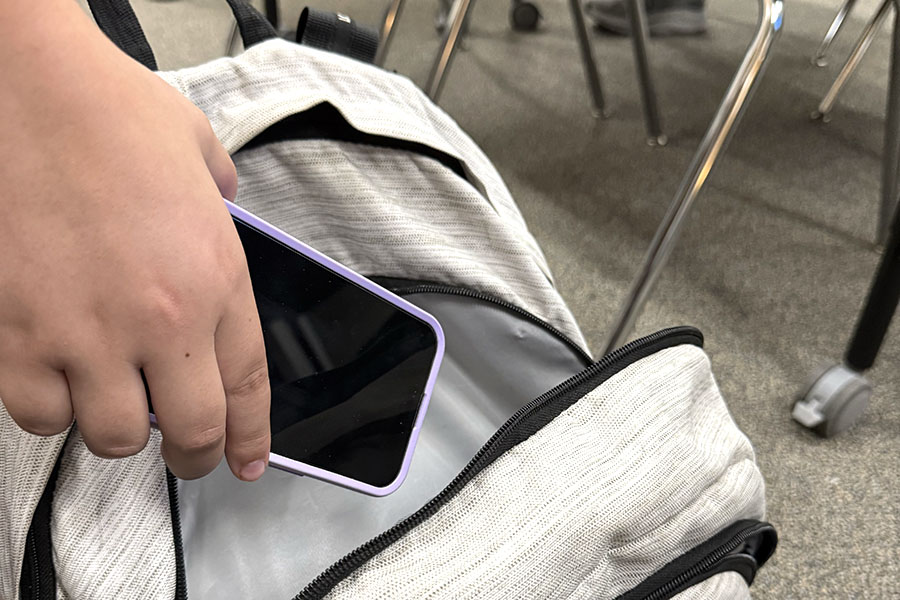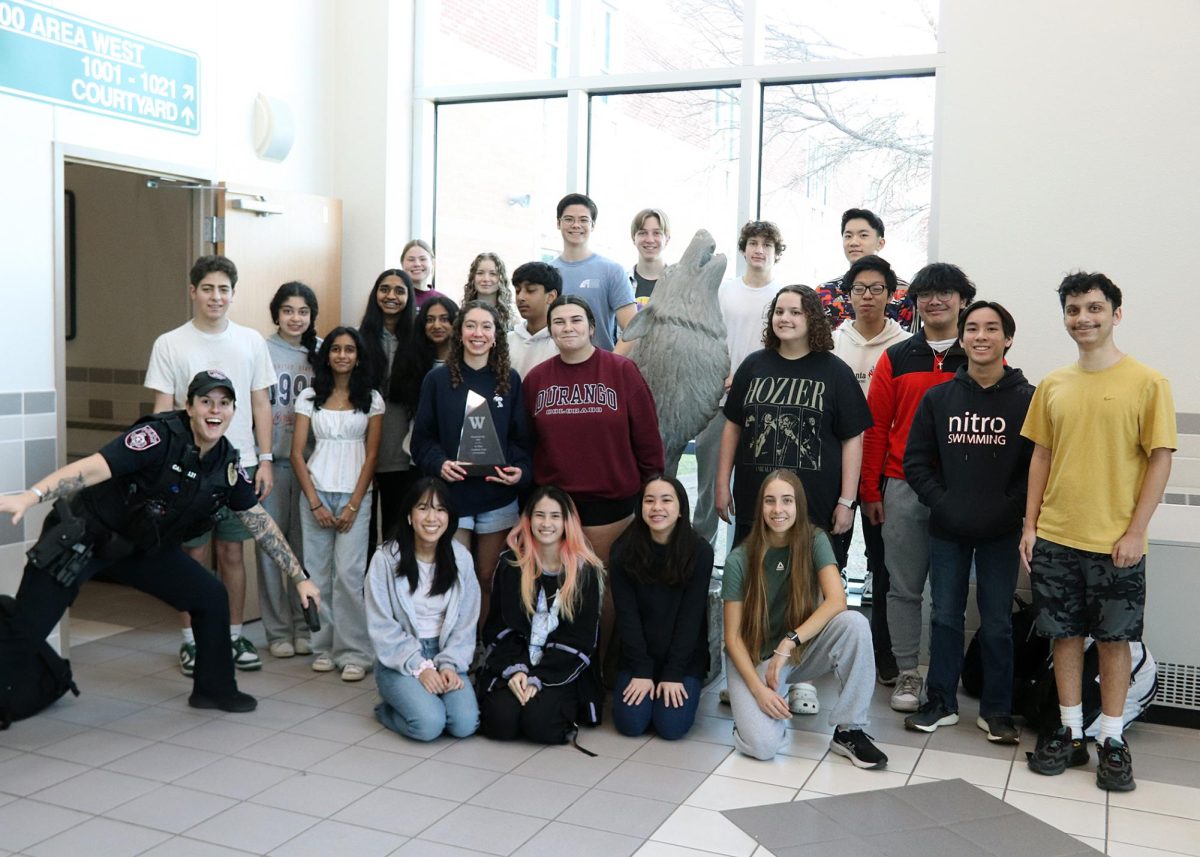The planet witnessed the demise of the dwarf elephant over two million years ago, the dodo bird in the 17th century, and the Carolina parakeet in 1918. Now in Cedar Park, Texas, the snowman too is fully extinct.
The snowman, a majestic and docile creature, is a familiar holiday image to most Americans. With a body constructed entirely out of snow and a goofy, coal-lump smile stuck underneath its endearingly over-sized carrot nose, it is difficult to resist the charms of the snowman.
Documentaries of noted snowmen, such as Jack Frost, depict the species to be generally good-willed and full of holiday cheer, exhibiting affection for humans and having a non-violent nature.
“The snowmen are just so nice to have around. You can’t be glum when you see that cheery smile,” Sally Silverbells, senior, said.
However, due to the composition of the snowman’s body, only a very limited range of climates can become home to the revered species. Though the dead winters of Cedar Park may be able to sustain smaller versions of these life forms for short periods of time, the general climate has proved detrimental to their overall reproduction rate, particularly in the age of ecological stressors such as global warming.
“I come from up north in Michigan. When I moved down here and found out that the population of snowmen had disappeared in the area, I didn’t know what to do. I cried myself to sleep for weeks,” Nancy Noel, junior, said.
The extinction of the snowman species in Cedar Park, however, has not come without illicit schemes for profit. There have been several reports of underground snowmen breeding facilities. These facilities are of such low moral standards that they do not even make the snowmen out of real snow; plastic and Styrofoam are the main ingredients in this dastardly scheme. The snowman is then dressed accordingly in various brightly colored scarves and hats and sold in mass numbers to the general public during the holiday season.
These weak substitutes for the true nobility of a purely-bred snowman have become commonplace in many American homes despite their contemptible origins. They are displayed throughout the holiday season, and afterward stored in an attic or garage for the rest of the year (condemned to months of isolation).
“It’s gross. These awful people are trying to make money off of those of us who are in mourning for the species,” Annabell Snow-Angel, senior, said.
I feel it is my duty to warn you, as readers, about the true nature of these false snowmen and the facilities from whence they come. I must implore you, as consumers, not to be fooled by the warm, cheery feelings these mannequins may give you, and to refrain from purchasing them, lest you disturb the memory of the snowman species.
It is a sad truth that Cedar Park will no longer witness the grandeur that is the population of snowmen, but you can do your part to salvage their memory in our hearts; should you be present on an inevitable (yet highly anticipated) ice day, take a few minutes out of your cocoa-drinking and “snowball” fighting to remember the snowmen. In fact, if you can gather enough ice and snow, try to build one. If anything, your efforts will be in homage to what will surely be a well-missed species.



![Jumping off the ground, senior linebacker Bennett Patton snatches the ball out of the air for an interception at Thursday’s game against Chaparral. Patton had two interceptions in the 56-14 victory, tying the school record for interceptions in a game. “I was just playing the game,” Patton said. “[I’m] going to go into next week, forget about it and stay humble.” Photo by Harper Chapman](https://cphswolfpack.com/wp-content/uploads/2025/09/bennett-interception.jpg)
![The fire department came to the school after students were evacuated when smoke started coming from the ceiling of a classroom. All students and staff are safe. “All of my friends left their stuff too, so we couldn’t contact our parents, and it was stressful,” senior Brynn Fowler said. “It was scary because I didn’t know [what was going on], and I couldn’t find anyone because it was a big crowd.” Photo by Anthony Garcia](https://cphswolfpack.com/wp-content/uploads/2025/09/firetruck.jpg)


![Sitting with her friend senior Sohpia Struve at last year’s Austin City Limits Festival, senior Ava Zuniga poses for a picture under a pavilion. They are frequent attendees at ACL, an annual music festival at Zilker Park. “I would recommend seeing a bunch of people,” Zuniga said. “This past year, we camped out for Chappell [Roan] for a really long time. I think the whole point of ACL, [which] is a lot of fun, is that you can go see so many different people, even if you don’t know them. So by camping by one person, it really limits yourself from being able to go see a bunch of people.” Photo courtesy of Ava Zuniga](https://cphswolfpack.com/wp-content/uploads/2025/10/EE9E9484-FE6F-4AA0-B5F5-0C177AB32841-1200x857.jpeg)
![Broadcast, yearbook and newspaper combined for 66 Interscholastic League Press Conference awards this year. Yearbook won 43, newspaper won 14 and broadcast took home nine. “I think [the ILPC awards] are a great way to give the kids some acknowledgement for all of their hard work,” newspaper and yearbook adviser Paige Hert said. “They typically spend the year covering everyone else’s big moments, so it’s really cool for them to be celebrated so many times and in so many different ways.”](https://cphswolfpack.com/wp-content/uploads/2025/05/edited-ILPC.jpg)




![Looking down at his racket, junior Hasun Nguyen hits the green tennis ball. Hasun has played tennis since he was 9 years old, and he is on the varsity team. "I feel like it’s not really appreciated in America as much, but [tennis] is a really competitive and mentally challenging sport,” Nguyen said. “I’m really level-headed and can keep my cool during a match, and that helps me play a bit better under pressure.” Photo by Kyra Cox](https://cphswolfpack.com/wp-content/uploads/2025/09/hasun.jpg)


![Bringing her arm over her head and taking a quick breath, junior Lauren Lucas swims the final laps of the 500 freestyle at the regionals swimming competition on date. Lucas broke the school’s 18-year-old record for the 500 freestyle at regionals and again at state with a time of 4:58.63. “I’d had my eye on that 500 record since my freshman year, so I was really excited to see if I could get it at regionals or districts,” Lucas said. “ State is always a really fun experience and medaling for the first time was really great. It was a very very tight race, [so] I was a bit surprised [that I medaled]. [There were] a lot of fast girls at the meet in general, [and] it was like a dogfight back and forth, back and forth.” Photo by Kaydence Wilkinson](https://cphswolfpack.com/wp-content/uploads/2025/03/Kaydence-2.7-23-edit-2.jpg)
![As the support team sits and poses for a photo in the cafeteria with the counseling team they eagerly wait to start their day. "We [all] seem to be a team, I get up every day and there's days where I don't want to go to work today, but I'm thankful that I have a job and I'm blessed to have what I have," Christopherson said. Photo Courtesy of Julie Weltens.](https://cphswolfpack.com/wp-content/uploads/2025/01/AF9E8470-10D7-4C91-BF28-EC8F86BAB66C-1200x852.jpeg)
![Officer Stephanie Cash is in her second year as an SRO at CPHS. “Seeing [students] grow over the years has been kind of cool,” Officer Cash said. “Freshmen that [are] all over the place and then in the next couple of years get a little more squared away and go to class and do work and start thinking about the future. Being a part of a student's growth is the best way to measure my success as an SRO.” Photo Courtesy of Cedar Park Police Department's PIO, Alicia Gallagher.](https://cphswolfpack.com/wp-content/uploads/2024/12/CPHS-SRO-900x1200.jpg)
![As he sprints with the ball, senior running back Trae Hill breaks a tackle during Friday’s 35-14 loss against the Vandegrift Vipers. Hill ran for 135 yards and two touchdowns during the game. “[Scoring] was electric,” Hill said. “It always feels good to score, but the O-line did everything.”](https://cphswolfpack.com/wp-content/uploads/2025/09/IMG_0795allie.varfb_-1200x799.jpg)














